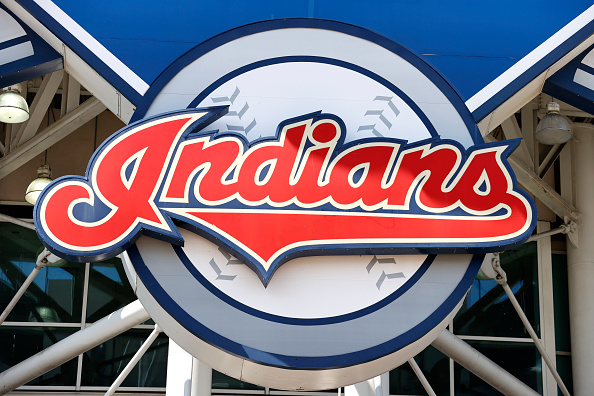The history of the Cleveland Indians dates back to 1901 when they were introduced to Major League Baseball as the Cleveland Bluebirds. They were one of the founding members of the brand new American League. Since their inception, the Indians could arguably be described as one of the least successful “successful” franchises in baseball. In their 119-year run, the Indians produced 68 winning seasons, finishing above .500 in eight different decades (they were also 35-25 during the 2020 season). Their all-time record is a very respectable 9,512-9,062. They even have a winning record in playoff games (56-55). Unfortunately, their winning ways almost never led to anything spectacular. The Indians are two-time World Series champions, with their most recent title coming in 1948. Their overall run is highlighted by two key periods of success: 1929-1956, and 1994-today.
The Indians’ stretch of success in the mid-to-late 1990s carried over into the 2000s. Since 2000 alone, the Indians produced 13 seasons of .500 ball or better, making it to the playoffs seven times. During this time, the Indians produced three Cy Young winners (CC Sabathia, Cliff Lee, and Corey Kluber – twice), and several quality performers, including five that fans may not remember.
Juan Gonzalez and Marty Cordova (2001)

The long-time Texas Rangers slugger Gonzalez never truly thrived outside of Arlington. After leaving Texas, Gonzalez signed a one-year deal with the Detroit Tigers, but he battled a foot injury and had defensive issues in the outfield due to the deep dimensions of the brand new Comerica Park. After returning to Texas in 2002 and 2003, Gonzalez signed with the Kansas City Royals in 2004, but back issues limited him to only 33 games. The only time Gonzalez regained his MVP form outside of Texas was with the Cleveland Indians in 2001. In 140 games, the right fielder hit .325 (second-best mark in his career) with 35 home runs and 140 runs batted in. Gonzalez earned his final All-Star appearance (third overall) and Silver Slugger award (sixth overall) and finished in the top five in the AL MVP race.

On the other side of the outfield was left fielder Cordova, whose one season in Cleveland may have been his best. Cordova hit .301 with 20 home runs and 61 runs batted in while setting career-highs in slugging percentage, OPS, and OPS+. Defensively, Cordova only made two errors in the outfield, finishing with a .990 fielding percentage and eight outfield assists. Both Gonzalez and Cordova were key role-players during the Indians’ 2001 season. The Indians won the AL Central that season, losing to the heavily-favored Seattle Mariners in the first round.
Jody Gerut (2003)
In 2009, Gerut became the first player in history to open a new stadium with a leadoff home run. That occurred while Gerut was a member of the San Diego Padres. Before that, Gerut debuted in Major League Baseball with the Indians in 2003.
His rookie year was likely his best year, as Gerut hit .279 with 22 home runs and 75 runs batted in (both career-highs). Gerut also set career-highs in hits, doubles, slugging percentage, and total bases. On defense, Gerut impressed with his arm, finishing the season with nine outfield assists. Gerut was a rare bright spot in an otherwise disappointing campaign for the Indians. Despite an influx of newer talent (Lee, Victor Martinez, Travis Hafner, and Gerut), the Indians finished the 2003 season in last place.
Ubaldo Jimenez (2013)
Fast forward to 2013, and the Indians found themselves back in the playoffs. New leadership under Terry Francona and surprisingly solid starting pitching propelled the Indians to a Wild Card berth. The 2013 season featured the emergence of future two-time Cy Young winner Kluber. However, another starter would emerge as the unexpected ace of the Indians: Jimenez.

After nearly six above-average seasons in Colorado, Jimenez struggled mightily after being traded to the Indians. In 2012, Jimenez led the league in losses with 17, finishing with a 5.40 ERA. In 2013, he rebounded in a big way. Jimenez finished with a 13-9 record and a 3.30 ERA in 32 starts (16 quality starts). His 3.30 ERA was his best since 2010 (2.88). Jimenez typically gets a bad rap when looking at his career outside of Colorado. As a result, his success with the Indians during the 2013 season is often forgotten.
Danny Salazar (2015)

In an odd move, Jimenez wasn’t named the 2013 AL Wild Card Game starter for the Indians. That nod went to then-rookie Salazar, who made his Major League debut in July of 2013. Salazar showed very good potential in his first few seasons with the Indians. Unfortunately, injuries have plagued him since 2016. Between 2017 and 2019, he only started 20 games and appeared in only 24. Salazar missed the entire 2018 season with shoulder injuries and remained unsigned in 2020.
Despite an All-Star appearance in 2016, some may argue Salazar’s best season came in 2015. Salazar set career-highs in wins (14), games started (30), quality starts (18), innings pitched (185), strikeouts (195), WHIP (1.13), ERA+ (125), and WAR (3.4). With Carlos Carrasco also emerging behind Kluber, Salazar became the perfect fit in the up-and-coming Indians starting rotation. Because injuries eventually derailed his progress, Salazar’s potential and his performance in 2015 often gets overlooked.
Check us out on our socials:
Twitter: @PTSTNews and @TalkPrimeTime
Facebook Page: Prime Time Sports Talk
Join our Facebook Group: Prime Time Sports Talk
Instagram: @ptsportstalk
Follow Matt Meffe on Twitter @mmeffe2
Main Credit Image: Embed from Getty Images








One Response